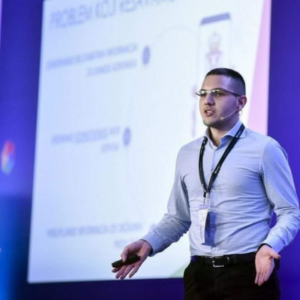Iz ugla programera
Prostor za autentična iskustva, izazove i savete, pružajući uvid u svet programiranja direktno iz perspektive stručnjaka.
Koji LLM koristiti u kom slučaju
Veliki jezički modeli (LLM – Large Language Models) postali su ključni alati u širokom spektru primena – od automatizacije korisničke podrške do programiranja i analize podataka. Međutim, kako se broj dostupnih modela povećava, postavlja se pitanje: koji
Programeri priznaju: Razvoj mobilnih aplikacija je pakao koji korisnici nikad neće videti
Svi koristimo mobilne aplikacije svakodnevno. Proveravamo vremenske prognoze, ćaskamo s prijateljima, naručujemo hranu, snalazimo se u saobraćaju. Na prvi pogled sve izgleda jednostavno - čist dizajn, glatke animacije, sve "samo radi". Ali iza te uglađene
Mentorstvo kao prečica do znanja: Iskustva studenata i izazovi industrije
Samoinicijativnost i praktičan rad pokazali su se kao ključni faktori za ulazak mladih u IT sektor, posebno kada formalno obrazovanje ne pruža dovoljno praktičnih znanja. Neformalno mentorstvo, po oceni koje su za HelloWorld.rs izneli profesori i stručnja
How to implement the recommendation system
You’re in the mood for a movie night, so naturally you open your favorite streaming service. What to watch? An eternal question. But then, like magic, a tailor-made selection of movie suggestions is waiting just for you. Most of the content we see is off
Platform inženjering: Evolucija DevOps-a ili samo novo ime za staru stvar
IT industrija doživljava još jedan talas transformacije. Nakon što je DevOps godinama bio dominantan pristup, na scenu stupa novi koncept – platform inženjering. Ali među stručnjacima postoji oštra podeljenost: jedni tvrde da je reč o revolucionarnom napr
Redis ponovo postao open source, ali da li je prekasno
Nakon burne godine ispunjene debatama, grananjima koda i negodovanjem zajednice, Redis je objavio verziju 8 i vratio se na pravi open source model pod AGPLv3 licencom, koja je odobrena od strane Open Source Initiative. Ovo više nije "source available" nit
Kako napraviti URL shortener za 100.000 zahteva u sekundi bez suvišne arhitekture
Programeri često nepotrebno komplikuju tehnička rešenja, a dobar primer za to je arhitektura za URL shortener servise - sisteme koji pretvaraju dugačke internet adrese u kratke, lake za deljenje linkove. Nedavna rasprava na programerskoj zajednici Reddit
AI preuzima kormilo: Mladi programeri koriste veštačku inteligenciju, ali ne razumeju kako ona funkcioniše
Dok se već godinama mladima savetuje da nauče programirati radi bolje perspektive na tržištu rada, iskusni developeri primećuju zabrinjavajući trend - mnogi novi programeri zapravo ne znaju da pišu kod bez pomoći veštačke inteligencije. Namanja Gul, pr
DeepSeek: Nova generacija AI modela menja pravila igre
Veliki jezički modeli (LLM-ovi) su doneli značajan napredak u veštačku inteligenciju, pri čemu je OpenAI napravio model koji je jedan od vodećih u ovom segmentu. Međutim, početkom ove godine pojavljuje se novi igrač. Naime, kineska kompanija DeepSeek j
Da ti ništa ne promakne
Ako želiš da ti stvarno ništa ne promakne, prijavi se jer šaljemo newsletter svake dve nedelje.






